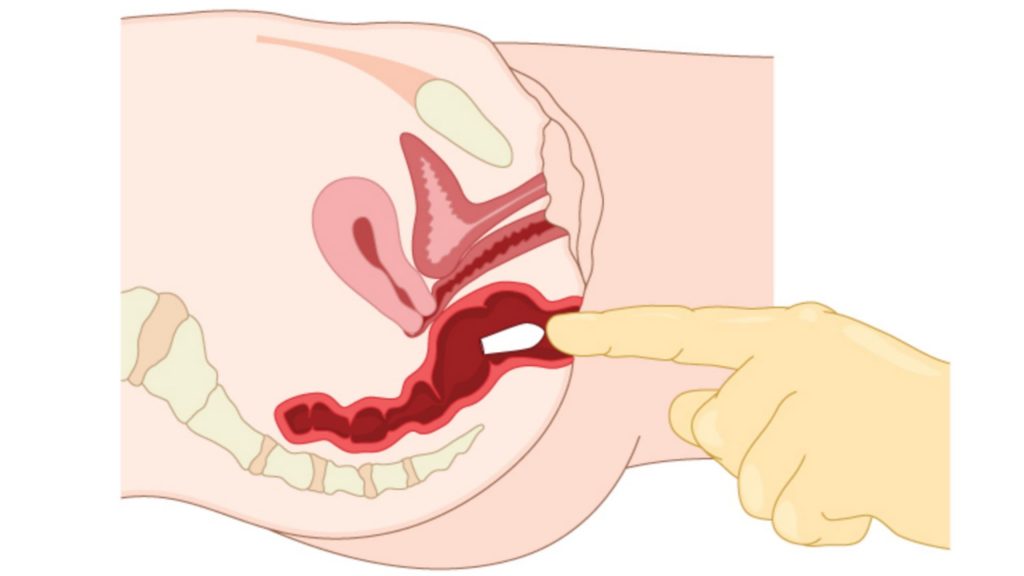Different Evaluation Tests For Suppositories:
1. Test of Appearance:
Table of Contents
All the suppositories should be uniform in size and shape. They should have an elegant appearance. Individual suppositories should be examined for cracks and pits due to the entrapment of air in the molten mass.
2. Breakage Test (Test of physical strength):
The tensile strength of suppositories is measured in this test to assess their ability to withstand the rigors of normal handling.
The apparatus used is called the breaking test apparatus. It consists of a double-wall chamber. Through the walls of the chamber, water is pumped. The inner chamber consists of a disc that holds the suppositories. To this disc, a rod is attached. The other end of the rod consists of another disc on which weights are placed.
Procedure:
On the first disc, the test suppository is placed. On the second disc, a 600 g weight is placed. At 1 minute interval, 200 g weights are added till the suppository crumbles. All the weights used are added which gives the tensile strength. Likewise, few more suppositories are tested and the average tensile strength is calculated. Tensile strength indicates the maximum force which the suppository can withstand during production, packing, and handling. Large tensile strength indicates less tendency to fracture.

3. Test of Dissolution Rate:
It is the amount of dosage form that gets dissolved in body fluid in unit time. It is a measure of the rate of drug release from the suppository.
Two types of apparatus are available for testing the dissolution rate. They are:
(a) Suppository dialysis cell: Lipophilic suppositories are tested using a suppository dialysis cell, which is also called a modified flow-through cell.
(b) Stationary basket: Rotating paddle apparatus (USP dissolution test apparatus). Hydrophilic suppositories are tested using a stationary basket rotating paddle apparatus.
4. Test of Melting Range:
Both micro melting range and micro melting range are determined as follows:
(a) Macromelting range
It is a measure of the thermal stability of the suppository. It is the time taken by the entire suppository to melt in a constant temperature water bath. The test is conducted using the tablet disintegration apparatus. The suppository is immersed in a constant water bath. Finally, the melting range is recorded.
(b) Micromelting range
The melting range of the fatty base is measured in capillary tubes.
5. Liquefaction time (softening):
Softening time is the time for which the suppository melts completely at a definite temperature. This test measures the softening time of suppositories which indicates the hardness of the base.
A liquefaction temperature/time test was done using the fabricated instrument. A big pipette was taken having a narrow opening on one side and a broad opening on another side. The pipette was dipped in hot water maintained at 35 ± 0.2°C so that the narrow end faces towards hot water. The sample suppository was introduced from the top of the pipette through the broad end and carefully pushed down its length until it reaches the narrow end. A glass rod was then inserted so that it rests over the suppository. The temperature at which the glass rods just come down was noted, which represents the liquefaction temperature. The time at which the glass rod reaches to narrow end after complete melting of suppositories represents the liquefaction time.
Test of uniformity of drug content:
This test is to assess the uniformity of the mixed suppository mass. Different suppositories are assayed for the drug. All the suppositories should contain the same labeled quantity of the drug.
Test of drug uptake:
Both in-vitro and in-vivo tests should be conducted to assess the amount of drug absorbed into the systemic circulation.
(a) In-Vitro test
The test conditions should be similar to those inside the human body. The dissolution apparatus is used which consists of simulated gastric and simulated intestinal fluids. A definite number of suppositories are placed in the apparatus. Aliquot portions of the dissolution medium are withdrawn at definite intervals of time and drug uptake is measured using a U.V. spectrophotometer.
(b) In-Vivo test
This test is carried on animals or human volunteers. The suppository is placed in the intended body cavity. At regular intervals of time, blood samples are collected and the amount of drug present is determined.
Stability Problems of Suppositories:
Blooming: During storage cocoa butter suppositories sometimes show deposition of white powder on the surface. This results in suppositories of disagreeable appearance.
Hardening: During storage, the suppositories made of fatty bases become hard. Hardening is occurred due to the crystallization of bases. This also affects the melting and rate of absorption of drugs.
Make sure you also check our other amazing Article on : Suppositories – Methods of preparation